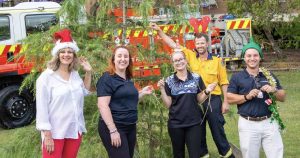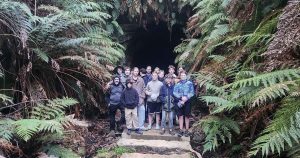By Lachlan Turner
Having a widespread distribution across most of Australia, the Grey Fantail is frequently observed feeding on flying insects, which it catches as it twists and turns in its agile aerial acrobatics, pursuing them from the edges of foliage trees at all levels above the ground.
Its nest is built in a thin tree-fork, around 2 to 5 metres from the ground, often quite exposed. Made of fine grass, it is bound together with copious amounts of a spiders web. The bottom of the nest under the thin branch is drawn down into a long stem-like shape, resembling a wine glass without the flat base.
Both parents share nest-building, incubation of the eggs and feeding responsibilities of the young when they hatch. There can be up to three hatchlings in the nest for the parent birds to supply with food. They must keep up persistent activity to catch small insects required to meet the needs of their hungry offspring.
Grey Fantails are almost continually on the move, constantly changing position when perched, with the tail swishing back and forth while being fanned out. Despite their fluttering flight, they have been known to fly relatively long distances.
These small birds are easily recognised by their constantly open fan-shaped tail when perched on a branch. Both male and female birds are similar in appearance: grey above, a light grey underbody, with a thin white eyebrow, throat and tail edges. It is not unusual for this bird to fly in close proximity to human observers both in bushland and garden environments.
This year the “Aussie Backyard Bird Count” will be held during Bird Week from Monday, October 18 to Sunday, October 24. For further information enter the following link in to your browser — https://www.aussiebirdcount.org.au






